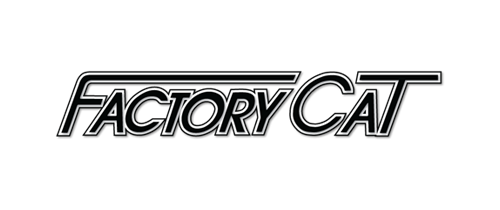
As environmental regulations continue to tighten across the warehousing and industrial equipment industries, fleet managers are looking for more sustainable solutions for their organizations. Electric material handling equipment provides a cost-efficient, environmentally friendly option for organizations looking to modernize their operations.
This guide explains everything fleet managers need to know about transitioning their equipment fleet to electric models, including common applications and vital implementation considerations.
Common Applications for Electric Equipment in Warehousing
As electric equipment becomes more common across the warehousing industry, most organizations are using their new electric models for the same applications as their internal combustion engine (ICE) equipment. Some of those applications include:
- Loading and unloading trucks.
- Stacking and racking pallets.
- Cross-docking.
- Cold storage and food handling.
Because electric equipment does not produce emissions, it’s more suitable for indoor uses in areas where proper ventilation may not be available — such as in ambient or bulk storage applications. It’s also quieter than ICE-powered equipment, which improves both jobsite safety and your compliance with OSHA noise regulations.
Why Switch to Electric Equipment for Warehouses?
Switching to electric warehousing equipment can help your facility reduce costs, increase sustainability and enhance the operator experience. The most significant benefits of electric warehouse equipment include:
Cost Savings
While electric equipment can be costly up front, the total cost of ownership (TCO) is often lower than that of traditional ICE-powered versions. Electricity is less costly than diesel and gas, and it’s more price-stable over time.
ICE engines require frequent maintenance to keep them clean and ensure proper function. The cost of fuel also consistently fluctuates, which can make it more difficult to budget effectively for each month.
In contrast, the efficient lithium-ion batteries in electric lift trucks can run for multiple shifts without requiring the same levels of maintenance. They also charge faster than previous generations of electric forklift batteries, which increases uptime and even rivals the quick-fueling capabilities of diesel engines.
Improved Ergonomics and Operator Experience
Harsh or uncomfortable working conditions are among the top drivers of high employee turnover in the warehousing industry. Switching to electronic forklift systems with enhanced ergonomic features can help you retain more of your crew for longer, which can reduce costs and maintain high efficiency levels.
Some ergonomic features you’ll find on electric forklifts include:
- Cushioning platforms for comfort while standing.
- Adjustable seats with armrests.
- Vibration-reduction capabilities.
- Noise-reducing cabins.
- Intuitive operator controls.
In addition to promoting higher morale and reducing employee turnover, ergonomic equipment can also enhance your productivity and efficiency rates by making it easier and more comfortable for operators to do their jobs.
Safer Workplaces
Electric material handling equipment can help you create a safer facility through:
- Improved communication: Electric equipment is significantly quieter than its ICE-powered counterparts, which helps reduce noise pollution on the jobsite and enhances communication between staff members.
- Zero emissions: Diesel engines typically produce exhaust fumes that can be harmful in closed spaces. Electric equipment, like Hyster’s heavy-duty electric forklift range, does not produce any direct emissions, making it safer for use in indoor applications like warehouses.
- Advanced technology: Newer electric models often have advanced safety technologies built into their equipment, which can help prevent collisions and other workplace accidents.
What Drawbacks and Challenges Should You Know About?
Some potential drawbacks of investing in electric equipment include:
- High up-front investment: Compared to ICE-powered equipment, the initial cost of electric models is substantial. You’ll also need to update your warehouse’s infrastructure to handle battery charging, which adds to the overall investment.
- Battery range and charging downtime: Although newer lithium-ion batteries are changing the game, some equipment models may still rely on older lead-acid batteries that require more frequent charging. Selecting equipment powered by modern batteries, such as Yale’s integrated lithium-ion lift trucks, can help you maximize uptime and improve productivity.
- Environmental considerations: Once lithium-ion batteries have reached the end of their useful lives, you can’t get rid of them in the same way you would eliminate other operational waste. Fortunately, it is possible to recycle these batteries and reduce your organization’s environmental impact.
Burns Industrial Equipment helps clients overcome these challenges by getting to know each facility’s specific capacity and goals. This information enables our experts to help you find the equipment that best fits your organization, which is essential for maximizing your return on investment (ROI).
3 Key Considerations When Switching to Electric Material Handling Equipment
To help minimize risk when transitioning from conventional ICE equipment to electric, your facility must consider the following elements.
1. Infrastructure Assessment
When electrifying your fleet, start by evaluating your facility’s existing infrastructure to determine whether you have the capacity to handle the equipment you plan to purchase. Define the scope and ultimate goal of this assessment — gauging your facility’s readiness to electrify your material handling fleet — and begin setting some parameters to guide your evaluation.
Some parameters that can help you ensure a thorough site assessment include:
- Technical performance of infrastructure.
- Financial metrics.
- Operational effectiveness.
- Risk and resilience.
If you find that your warehouse is missing some key infrastructure, such as a suitable location for a charging depot, investing in updates may be your next step. Otherwise, you may be able to begin adding electric models into your fleet.
2. Staff Training and Safety Protocols
As with any new equipment purchase, your organization should thoroughly retrain its staff to safely and efficiently use your new electric vehicles. Operator training is critical for full-time employees. You should also require familiarity with electric equipment when hiring new staff or bringing in contractors.
3. Cost of Ownership Comparison
Although electric equipment can provide significant cost savings in the long run, it’s important to calculate the ultimate benefit of this equipment for your organization before making a purchase. Compare the total costs of an electric forklift to those of an ICE model you already own.
If the electric version looks like it will be more costly overall, your organization may benefit from waiting to electrify your fleet. You may also find that gradually transitioning your fleet by phasing out old ICE models by a certain date can help you get started more easily.
General Trends and the Future of Electric Warehouse Equipment
The electric equipment market is expected to grow significantly over the next few years — experts predict it will increase at a compound annual growth rate (CAGR) of 5.2% between 2019 and 2032.
As electric equipment becomes more common in the industry, electric forklift cost efficiency is also likely to increase due to:
- Growing economies of scale.
- Government incentives.
- Decreasing battery costs.
- Improvements in efficiency.
- Greater availability of safe battery recycling centers.
Preparing for this future now can help ensure your warehouse aligns with changing laws and market projections, which is essential for remaining competitive in the industry.
Electrify Your Fleet With Burns Industrial Equipment
Although electrifying your material handling fleet may require a high up-front investment, it’s ultimately worth the cost to remain compliant with critical industry regulations, minimize employee turnover and improve workplace safety. Burns Industrial Equipment offers premium electric lift trucks and accessories for any size warehouse.
We’ll help ensure you get the most value for your investment. Contact us today to develop a custom equipment strategy tailored to your facility’s specific needs.











